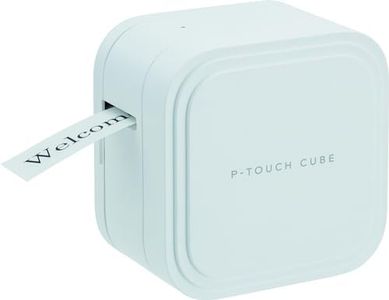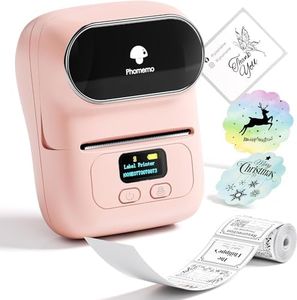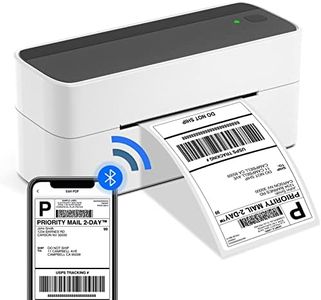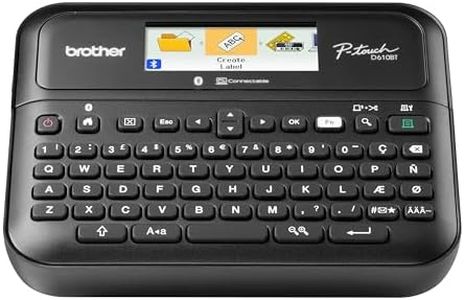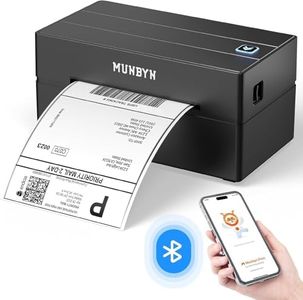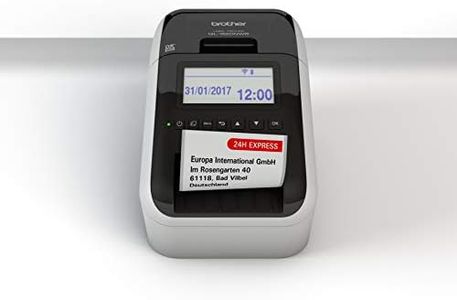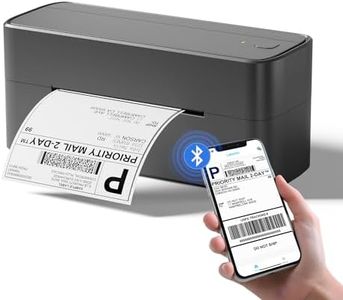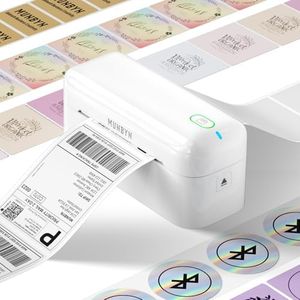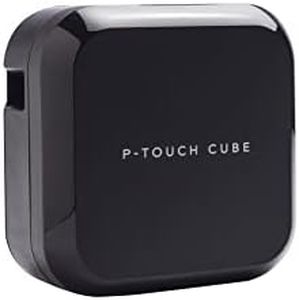We Use CookiesWe use cookies to enhance the security, performance,
functionality and for analytical and promotional activities. By continuing to browse this site you
are agreeing to our privacy policy
10 Best Bluetooth Label Printers
From leading brands and best sellers available on the web.Buying Guide for the Best Bluetooth Label Printers
Choosing a Bluetooth label printer can make your home or office organization, shipping, or retail tasks much smoother. To find the ideal one, take some time to think about where and how you’ll be using the printer. Consider the type of labels you’ll need, how often you'll print, and whether you'll want to move the printer around. Each model can offer different features, so understanding the important specifications will help you select a printer that’s easy to use and fits your needs perfectly.Print ResolutionPrint resolution tells you how sharp and clear your labels will look. It’s usually measured in dots per inch (DPI). Higher DPI means the text and graphics on your labels will come out crisper, which is great for small font sizes or detailed images. Basic printers may offer around 200 DPI—suitable for simple barcodes or shipping labels—while higher-end ones go up to 300 DPI or more, ideal for labels with small text or branding. If your labels are mostly text and used for organizing, lower resolution is fine; if they need to look professional or contain detailed images, go for higher resolution.
Label Size CompatibilityLabel size compatibility tells you what size labels the printer can handle. Some printers are built only for narrow labels (like those for address or barcode labels), while others can handle a wide range of sizes, including large shipping labels and tiny tags. Check what sizes of labels you’ll actually need. If you’ll only ever print small barcode or file labels, a model limited to those sizes is great. If you want flexibility for tasks like shipping, organizing, or even name badges, look for printers that support a bigger range of label widths and lengths.
Printing SpeedPrinting speed is usually measured in millimeters or inches per second and tells you how fast the printer produces your labels. Faster speeds are useful if you need to print lots of labels at once, like in a business setting, but may not be as important if you only print occasionally or a few at a time. If you often print in bulk or under time pressure, choose a faster model. For home organization or infrequent printing, slower speeds won’t be an issue.
Connectivity OptionsWhile Bluetooth is standard in these printers—for connecting wirelessly to phones, tablets, or computers—many also offer USB or Wi-Fi connections. This spec matters if you want to print from different types of devices, or if you need a backup connection for when Bluetooth isn’t working. If you only use a smartphone or tablet, Bluetooth alone will work well. For more flexibility, look for a printer that offers multiple connection methods.
Battery Life and PowerSome Bluetooth label printers come with built-in rechargeable batteries, making them portable; others must be plugged in during use. Battery life is important if you want to use the printer while moving around (for example, at events or moving between offices). If portability matters, check how long the printer lasts on a charge and how easy it is to recharge. If the printer will stay on a desk, battery life isn’t as crucial.
Mobile App and Software SupportThe quality of the printer’s mobile app or required software affects how easily you can design and print labels from your phone or computer. Good apps let you customize label templates, add images or barcodes, and print seamlessly. Some support cloud integration or syncing across devices. If you value ease of use and design flexibility, choose a printer with a simple, highly rated app that works with your operating system. If you’re tech-savvy or have specific design needs, check for advanced features or software compatibility.
Type of Labels SupportedSome printers only work with their brand's proprietary labels (which may limit your options and cost more), while others support generic labels you can easily buy. The type of labels also refers to whether the printer uses direct thermal printing (no ink needed) or requires ink or ribbon. If you want simplicity, look for direct thermal printers with easy-to-find label refills, especially if you’re likely to print a variety of label types.
